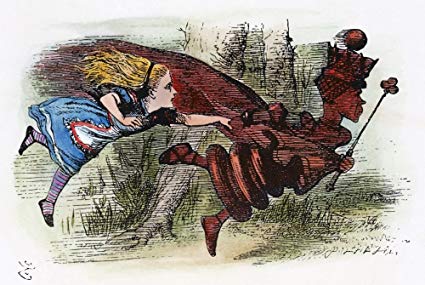“It is stasis, not change, that is the hallmark of evolution.” (Pg 63.)

In the biological world, both within and between species, adaptive progress and success are relative. This notion of evolutionary relativism is known as the Red Queen Effect.
Ex.
Consider one of his first examples – a narrative on the relationship between bears and seals. Many years ago, brown bears may have found it particularly easy to catch seals because seals hadn’t evolved a fear of enemies on the ice. With fearlessness varying in the population of seals, and under genetic control, those individuals, which were most timid, survived and produced the most offspring, because they avoided predation by the bears. Soon, the seals became more and more careful and successful predation for the bears became increasingly difficult. Try as they might, the contrast of the brown fur with the white snow made it nearly impossible for the bears to sneak up on the seals.
Imagine, however, that during a chance mutation, a group of white bear cubs were born. They were incredibly successful because they were afforded the stealth of camouflage, roaming alongside the white snow, able to avoid the seal’s detection altogether. The seals, once successful, had returned to where they had started, no more or less efficient at avoiding predation. Engaging in an evolutionary arms race, both the seals and polar bears developed an adaptation toward avoiding predation and securing prey, respectively.
An improvement in one species will inevitably lead to a pressure for the emergence of an equally effective adaptation among the competing species.
Ridley furthermore draws upon the Red Queen to explain the advantages of sex, arguing its superiority to two other hypotheses: The Vicar of Bray and the Tangled Bank. The Vicar of Bray asserts that sex serves to respond to environmental changes, and the Tangled Bank argues that diversification of the species, produced by sex, is favored in environments of intense competition and limited resources.
